How can you invent a legacy when you don’t have one? Trisha Brown has never been to Romania and her artistic practices, although known all over the world, still have little visibility in our choreographic space. If you could see me is the name of one of the sequences belonging to the piece „For Patricia”, which will be presented in a work in progress format at the National Dance Centre Bucharest (CNDB).
Spanning 6 weeks throughout January and February of 2024, CNDB hosted choreographer and dancer Sarah Fdili Alaoui together with musician John Sullivan in residency as part of the MODINA project (Movement, Digital Intelligence and Interactive Audience), joined by performer Bartosz Ostrowski and percussionist Léo Chédin, in order to co-create For Patricia, a work dedicated to the dancer, choreographer and visual artist Trisha Brown (1936 – 2017), founder of postmodernism in dance, along with Anna Halprin, Yvonne Rainer, Steve Paxton, Simone Forti and other artists.
If you could see me is a direct reference to Trisha Brown’s 1944 solo piece, If you couldn’t see me, a collaboration with artist Robert Rauschenberg in which Trisha performs a ten-minute dance with her back to the audience as a gesture of rejection towards dance virtuosity and audience expectations, but also a shift in perspective so that we can perceive things differently or notice subjects we don’t usually observe, such as a dancer’s back, which is fundamental to the functioning of dance.
If we could have seen Trisha Brown, we would have seen her incorporating „found gestures” through task-based movement studies such as sweeping the floor, walking, etc. (in Anna Halprin’s outdoor studio or Robert Dunn’s improvisational workshop); we would have seen her using pieces of equipment to reimagine notions of space and challenge gravity (Man walking down the side of a building; Woman walking down a ladder; Spiral); we would have seen her assigning gestures to letters so that the words provide an entire movement phrase (Locus); we would have seen in her drawings and diagrams the movement within her body (Pyramid); we would have seen her talking while dancing „like a ventilation system for the mind” (Accumulation with Talking plus Water Motor); we would have seen her dancing on rooftops (Roof Piece), in parks (Floor of the forest), in the streets (Leaning duets) or on gallery walls (Walking on the Wall); we would have seen her performing an everyday gesture in such a way that we would not have known whether she had stopped dancing or not.
In the following interview we spoke to Sarah Fdili Alaoui and John Sullivan who have been working hard together with their team to write For Patricia. We shared the CNDB Media Library space with them over the past few weeks, discussed Trisha Brown and the Judson Church group, watched films from the CNDB video archive and attended rehearsals in the main hall whenever we could.
I’m so glad you’re here, bringing Trisha Brown to our attention today, in another time and in another space. Trisha Brown was never here. She arrives late, but never too late, so to speak, through your work For Patricia. What was your motivation for dedicating a postmodernist ode to the American dancer and choreographer Trisha Brown in this context, in 2024?
Sarah Fdili Alaoui: I think Trisha Brown’s work is in a way timeless or has survived the last 50 years without necessarily ageing or becoming irrelevant. Obviously, different periods in dance have passed, and she invented new dance forms, which in the 70s were very challenging and sometimes even hard to consider as dance. As time went on, there were other orientations in dance that went in the opposite direction. But I think what really inspires me about Trisha Brown is her way of looking at simplicity and playing with it, and the fact that her dance is constantly referencing the pleasure of dancing. Personally, I have a kind of obsession with dance archives and history, what has been created before and the knowledge that has come from it. It’s very exciting for me to uncover this information, to recontextualise it and reframe it in a different way, rather than always starting again and reinventing something new. I don’t think we need to invent something new all the time. I think there are avenues of thought and creative processes in what has been created that are still worth exploring. I also think she has a way of embedding movement in the body that is highly distinctive and very enjoyable to achieve. This is one of the reasons I was very interested in her movement vocabulary, her way of seeing dance, her legacy and history. When we started working, we wanted to play with these principles in a different way, in a way that we could shape them today in 2024.
John Sullivan: I can also mention that this residency is part of the Modina project (Movement, Digital Intelligence and Interactive Audience) and that the proposal for this work had some parameters, the most important of which was to create an interactive performance using artificial intelligence (AI). For us, the way Trisha Brown composed her dances, using serialism and activities based on algorithmic processes and patterns, I think connects very well with this digital environment in which we work today. There’s a fascinating correlation between these and it seemed like a very appropriate topic to explore through a digitally mediated performance through AI.
It’s very interesting that you mention these similarities and, in a way, updates of Trisha Brown’s art practice through technology, and I’d like to ask you about the challenges you encounter when integrating technology into art practice and vice versa. How do you negotiate between the sometimes standardized or formal structure of technology, on the one hand, and flexibility or improvisation in artistic practices, on the other?
S.F.A.: I think it’s an ongoing discussion. Certainly, when technology comes to the forefront, it definitely has its own agenda. For example, last week we started working with an avatar that we assigned all sorts of behaviors to which were inspired by the Trisha Brown dance videos we were working with. After extracting skeletal data from the videos of Trisha Brown dancing, we tried to integrate it into the piece, teaching the artificial intelligence that would then trigger what we would perform on stage. And then we had a group of researchers come in to collaborate with us in the Modina residency, who were mostly specialized in avatars and 3D environments. And this came with its own aesthetic, its own constraints, and brought something completely different to the piece, something that at times seems to pull you off the rails and then you have to pull yourself back. That kind of pushing forward or pulling back is how I see technology. It’s like stopping or fragmenting the process and then integrating something only to see what it produces later. And sometimes it’s great and it brings a lot of opportunities and ideas for improvisation and creative outcomes. And other times it’s like, „wait, why? Why did I derail all the way there? That’s actually not what the play is about.” I think this is the kind of tension that sometimes arises when technology and art meet.
J.S.: I have some thoughts in this regard. One of them is purely practical. Sometimes I feel very pressured, and that’s related to the time I spend programming and the time I spend playing the piano and producing sound. I spend twice as much time sitting at the computer designing programs to do whatever needs to be done, whether it’s the visuals that are coming next week or the AI that generates our instructions on stage. So, there’s a pressure and an attraction that arises depending on the day. Sometimes I tell myself that today is my artist day and I’m going to sit in front of a piano and I’m going to be very creative and in the flow state and I’m going to think about the music and the movement, and then I can completely focus. On other days, I think about some code that I have to write and that I have to do different things. And that can be really challenging, to get all these elements to line up, and then technology gets to do the artistic things for you. But other times it’s great, because technology can do things that we as humans can’t do. So, there’s always going to be both a pressure as well as an attraction. I think there are good sides and bad sides to it.
And then the other point I was considering is related to this techno-creative process, from a phenomenological perspective. This line of thinking comes from the „post-phenomenology” of philosopher Don Ihde and others, who consider our relationship to the world through the lens of the technologies we use. And these technologies have an important influence on how we interact with the world. There has been a lot of research on the fact that technology is not neutral. When we use technology, it steers us in certain directions and makes us behave in certain ways, depending on the task we are doing and the technologies involved. For example, when you use a popular music production software like Ableton Live – it was designed by the electronic and techno music communities that the designers were part of – it’s very easy to make techno music with it. And if you use Max – a visual programming language for music and interactive media that we use a lot in this piece – it’s a bit more technical and, as an unintended side effect, the piece becomes more technical as well. So, all these choices we make, which might seem very open and flexible, push you in different directions in order to do different things. And I think that’s what happened with the avatar design. We have these resources, we have these technologies that seem fun to explore, and then you get into it, and after a while you’re like, „Okay, we built this, but in a totally different way, and maybe we didn’t want to go in that direction, but we were easily steered in that direction.” Therefore, thinking about technology in terms of creativity also means thinking about how easy it could steer you in directions you didn’t intend.
S.F.A.: Certainly, technology brings along its own world. And by world, I mean aesthetics, values, etc. And so, depending on the technology, the way you design it, the way you use it or maybe even the way you reappropriate it, it imposes specific ideas on you.
Listening to you both talking about technology and the creative process it seems that you, like Trisha Brown, have different layers of accumulation in your work on this piece.
S.F.A.: Yes, that’s what we do… If we’re talking in the vocabulary of choreographer Trisha Brown, we’re also accumulating layers that she didn’t have. So, there’s movement and there’s certainly music. Back then, there was a lot of talk about movement versus music, movement versus the visual. Trisha Brown worked a lot with Robert Rauschenberg and other visual artists, and that kind of dialogue was: who’s guiding who? And I think for us there are other elements as well, the problem is that there’s not just one technology here. We call it AI, but we are talking about many different layers of technology… The basic concept was: what if we used artificial intelligence as a conduit, as a scaffolding for the piece, as a way to create the choreographic and musical structures that we would perform on stage. And it’s an ode to Trisha Brown, because we think of these structures in terms similar to the accumulation structures that she invented. The way she combined them and played with these variations and repetitions is similar to us, and proving very inspiring. Only instead of doing it with pencil on paper, as Trisha Brown used to amplify her ideas through drawing and diagrams, we used artificial intelligence to do it. That was our overall concept. And then we thought: okay, how do we start by generating the material that we’re going to play with? So, music for John and dance for me. And then we thought about the kind of technology that could merge them.
J.S.: I think an important part of the process was the idea that we start with discrete compositions. A composed piece of music, a composed choreography sequence. Then playing with them and seeing how we can start randomly breaking them down, dicing it up and reformulating them, using artificial intelligence to instruct us.
I like the sound of this „roll of the dice” and I’m very curious about the way it works. In your project description you mention that, just as Trisha Brown and Merce Cunningham used to play with repetition and chance, you intend to play with the process of generating a performative situation before going on stage. Can you explain how you accomplish this?
J.S.: We’re working on that right now, so it’s very much work in progress… We have basically two sets of motion-based data. One set we extracted from Trisha Brown’s video archives using software, using artificial intelligence in order to extract 3D motion data from some fragments of her dance. The other data we have originates from Sarah and Bartek dancing these sequences that Sarah choreographed and we used the same process to extract motion data from these as well. The next step is to use software analysis to extract important characteristics from their dances. There are a number of different things we can measure, such as the speed of movement for different parts of the body, acceleration rates, total amounts of movement for a fixed point on the body, or even the total energy of the body. Thus, we obtain a kind of mapping of characteristics. Our system works as follows: we have an AI agent that has the data from Sarah and Bartek on which it was trained. We feed it a stream of data from Trisha Brown, essentially clicking on a video that can be transmitted. It analyzes the data, and based on the information it gets about what Trisha Brown is doing, and referencing the data from Sarah and Bartek, it suggests to them that she’s doing this here, that there’s a part of the dance that’s doing this there, and so this is the part of the dance that you should be doing. Thus, it gives instructions on stage for Sarah and Bartek as well as for Leo and myself to perform the appropriate piece. So basically, it’s about understanding the structure that Trisha Brown worked with and then, based on that, it tells us what to perform within the vocabulary that we’ve created. And so, it’s about picking the pieces that we’ve created that are closest to what Trisha did.
This implies that you are making an abstraction, which in turn also generates new archival data about Trisha Brown’s choreography…
John: Yes. We basically extract information from what Trisha Brown has composed, and that information tells us what to do next. It guides us in the way in which Trisha has worked in the past and reorganizes our choreography based on that data.
As a kind of technological body-to-body transmission…
S.F.A.: Yes. Or as a translation or as a (technological) transfer. Something like that. And yes, that’s the very core of how things work so far. There are also a bunch of other choices we made in generating the choreography and music. For example, in one of the three sections of the dance, we took this song by Marcel Khalifa which is based on a poem by Mahmoud Darwish. And then we took each sentence and choreographed it into gestures. Then we dropped the song, and John came in and wrote a new song. And then we patched it up again. And that’s a lot like postmodernism, taking inspiration from something, fragmenting it, changing it, and then reinventing a new form. This is currently the vocabulary we have and will be playing with. And we’ve done that with all three sections we have in the play.
Now that you’ve mentioned that the play has three sections, can you reveal the other two and how they relate to Trisha?
S.F.A.: We can reveal that in the interview, but we probably won’t reveal it on stage. Yes, there is a section that I just explained, which is called Ummi, which is Arabic for mother. This section is inspired by a poem of Palestinian poet Mahmoud Darwish. Based on this poem, I choreographed each phrase as a dance sequence, then I gave this information to John, who had also prepared pieces of music that he could vary according to the different sections of the poem and dance. Afterwards, we assembled them all together, tried them out, then gave each other feedback and played with them. So it’s a section that will be very repetitive, but also with a lot of variation in space and a system that will give us triggers from the poem and sequences to play with.
The second section is called If You Could See Me, and it of course references Trisha Brown’s solo, which is called If You Couldn’t See Me. This section was also choreographed as a song. We were like, “Let’s make it like a jazz song or like that”. Section A, B, A, B, B, C, A, B, D. So, we remade A, we remade B, we remade C from the material we had separately, and D, then we gave it back to John, and he wrote A and B and C and D, then tried A and B and C and D together again. So, it’s kind of a game. It’s an iterative process. We figure something out, we make a sort of whole composition, we get to the end, and then we take pieces of it apart and recombine it in another way until we get somewhere. Yes, I feel like every time we get to a point where we’ve learned something, we have to take it apart a little bit and learn a different version again. The system will be complete, but the idea is that every time we perform this piece it will be different, because it will always be randomly generated by technology.
But in what order and in what variation, we don’t know. It will always be different because it will depend on the choices made by technology.
The third section is perhaps the simplest one. We call it Bartek’s Walk or The Walk. They are just structures, spatial structures with a specific way of walking, which we vary over time in an improvised way. In a way, this section is like a counterpoint to the others, which are quite cognitively demanding because in them we are reacting to a system in which we are like puppets doing what we are told. And this last section, I feel, has a kind of cathartic release, because we can just enjoy ourselves in it. We will be doing part of this section on the helipad found outside the courtyard of the CNDB (a work by artist Gili Mocanu and produced by H’art Gallery in 2017 as part of CNDB Domol), as a short in-situ performance before the play begins on stage. We wanted to have this in-situ version of the piece outside, where Bartek and I do this sort of walk across the H shape (of the helipad), while greeting the audience coming in.
This reminds me of how Trisha Brown began her artistic practice with experimental works in unconventional outdoor spaces and surfaces, and only later did she choreograph for the stage and present her pieces in various theatres.
S.F.A.: Exactly. This part is an absolute homage to that, to the fact that most of the works early in her career were outdoor, without music, in-situ works that were made according to the ambient. As such, yes, we’ll present a short version of this period before moving on to the stage area. And that’s a symbolic route, yes.
Going back to the choreography of the piece, how do its movements feel in your body as a dancer belonging to your particular generation?
S.F.A.: Yes, interesting question. A long time ago I attended a workshop where I learned Set and Reset (a piece choreographed by Trisha Brown in 1983, with music by Laurie Anderson and set design by Robert Rauschenberg). It was a workshop taught by Diane Madden, who was one of the principal dancers of the Trisha Brown Dance Company for a long time. And that workshop was an extraordinary moment, because that motion felt so liberating in the body. And when I think of Trisha Brown, I don’t think of virtuoso dance, even though it’s actually virtuoso in its nature, but of a movement that is so liberating, that can be danced by virtually anyone, with certain limitations. And that actually fits my own personality. I love Trisha Brown’s ease and that effortlessness, fluidity, that playfulness and sense of humor in her choreography. The simplicity and clarity of movement. In that sense, it was very easy for me to get into a Trisha Brown state. Her movement is so organic and natural. I think that’s where her genius lies: in bringing those simple movements to the stage, which recombined in their entirety, create complexity and wonder. These are the kinds of qualities I have in mind as I choreograph this piece about Trisha, trying to play with and be inspired by this way of being.
To conclude this interview, I would like to ask how you felt working in the CNDB space, how were the conditions here for you or did they influence the piece in any way?
John: For me it was wonderful. It was very comfortable to be here. I think the space, the facility, the technicians, the resources at the media library of the CNDB had a significant influence on our work process at this stage. And then another interesting thing that I consider part of the creative process is that you draw from the things that are around you. I definitely feel that there is an influence from here, from the CNDB, from Bucharest, from this country and from everything that we’ve done here. I have parts of that in my composition, things that I heard outside and incorporated. An interesting sound that may have nothing to do with Trisha Brown or Mahmood Darwish, but it’s in the composition because I’m here and that’s how it all comes together. Kind of a site-specific composition. Your surroundings become part of what you do.
S.F.A.: We are very grateful for the team here. They made everything very pleasant and welcoming. I appreciate everyone’s willingness to help us whenever we needed it, and even when we didn’t, actually. That’s very nice about this residency, I have nothing to complain about. It’s starting to become a kind of little ritual. Going back and forth to the studio, like we’re going to be here forever.
I want to go back to the process for a moment. You’ve had this period of research, of laboratory work, which will soon end with your presentation in front of the public. I would also like to ask how you see the play. Is it like a creative art project, a research project or both? And what are your plans for the future within the MODINA project and beyond?
S.F.A.: Both, actually. It’s a product of artistic research, a piece, an artefact, a performance. We hope to be able to tour For Patricia in as many places as possible. Modina is already offering three venues to tour in the fall, and then once we have the video trailer, we’ll try to advertise it so we can show it in different places. On the other hand, we’re documenting our process as a kind of autoethnography of these different stages we’re going through, writing down information about how we built things, how we collaborated together, the limitations of that collaboration, as well as the limitations of the technology that we used, and how these heavy layers that we wear, or the stress of wearing them, have influenced us. We want to retrace these trajectories and talk about them in an academic way that makes sense to other practitioners who are also trying to write about their practice and reflect on their practice and have a productive outcome for the rest of the academic world.
Thank you very much for your time and I wish you all the best.
Sarah Fdili Alaoui is a researcher, choreographer and dancer of French-Moroccan origin. She is an associate professor at the University of Paris-Sud / Paris Saclay in the fields of human-computer interaction, interaction design, dance and technology. She was a researcher at the School of Interactive Arts and Technology at Simon Fraser University in Vancouver. She holds a PhD in Art and Science from Université Paris-Sud 11, IRCAM-Centre Pompidou and LIMSI-CNRS research institutes, an MSc from Université Joseph Fourier and an engineering degree from ENSIMAG in Applied Mathematics and Computer Science, as well as over 30 years of training in ballet and contemporary dance. She holds a Laban Movement Analyst certification from the Laban/Bartienieff Institute for Movement Studies in New York, USA. Sarah has created several art and science projects that integrate technologies into creation, from interactive choreographic works to interactive installations and tools to support choreography and dance archives. Her complete works can be found here.
John Sullivan is a multimodal interaction designer, researcher and musician. He is currently a postdoctoral fellow at the University of Paris-Sud / Paris Saclay, where his research focuses on multimodal interaction design and the development of new technologies for music, dance and multimedia performance. With a background in musical performance and human-computer interaction, his work includes user research, participatory design workshops, and collaborations with musicians and performers aiming to better understand and support professional performance practices. He has conducted research in the areas of live performance motion capture analysis, haptic interaction, and accessible digital musical instrument design. As a musician, John has been part of several indie rock bands in the Northeastern US. He has released several albums under various names and toured extensively in the U.S., Canada and Europe. John holds a Ph.D. in Music Technology from McGill University and an M.F.A. in Intermedia from the University of Maine. More about his projects can be found here.
For Patricia was presented in a work in progress format at the Stere Popescu Hall at CNDB on the 1st of March, in the framework of the MODINA project, co-funded by the European Union through the Creative Europe programme. The project “Movement, Digital Intelligence and Interactive Audiences” (MODINA) aims to expand the creative possibilities of contemporary dance performances and enhance audience experience with digital technology – emphasising the exploration of Artificial Intelligence (AI) and audience interaction, on-site and online. The project partners are 3 academic institutions and 5 dance centres, from Estonia, Germany, Portugal, Slovenia, Hungary and Romania.
Transalted by Dragoș Dogioiu
POSTED BY
Corina Cimpoieru
Corina Cimpoieru studied cultural anthropology and is currently the coordinator of the Dance and Performance Archives at the National Dance Centre Bucharest (CNDB). She is interested in dance history ...
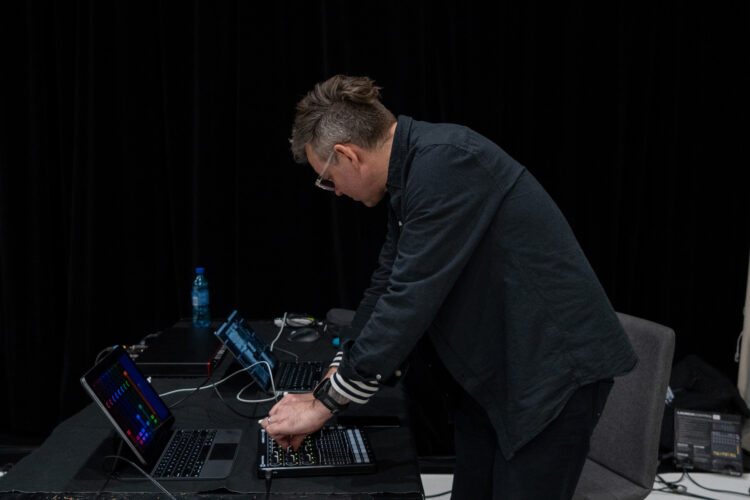
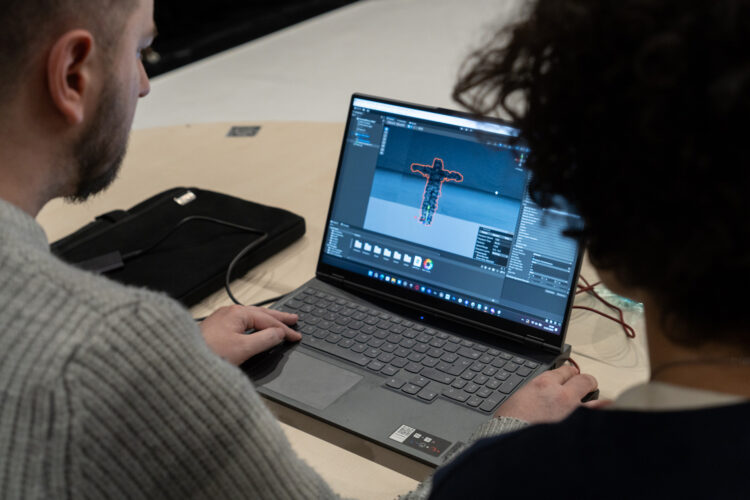
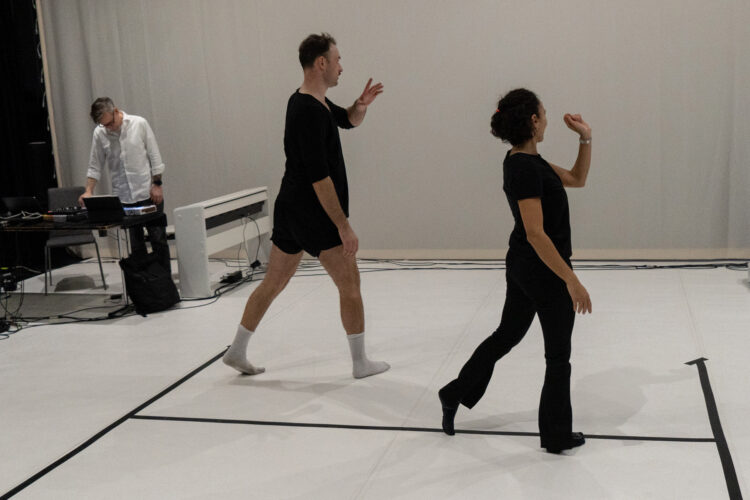

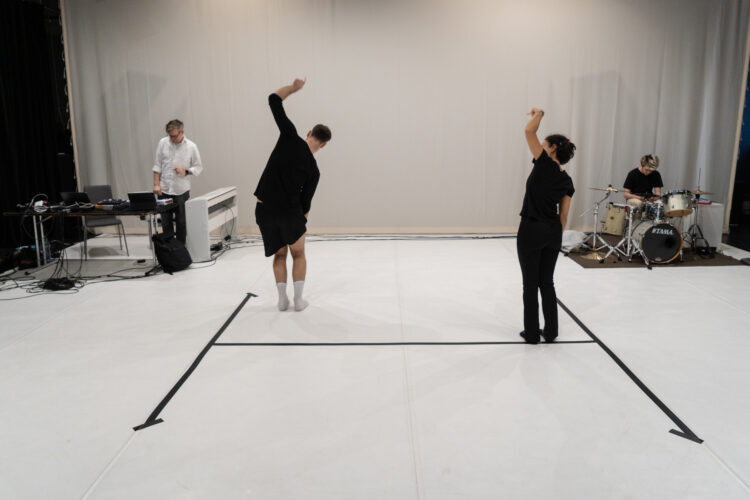
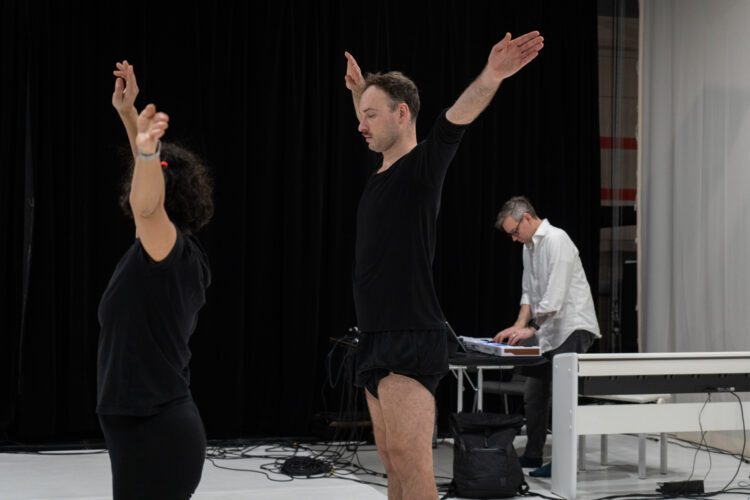
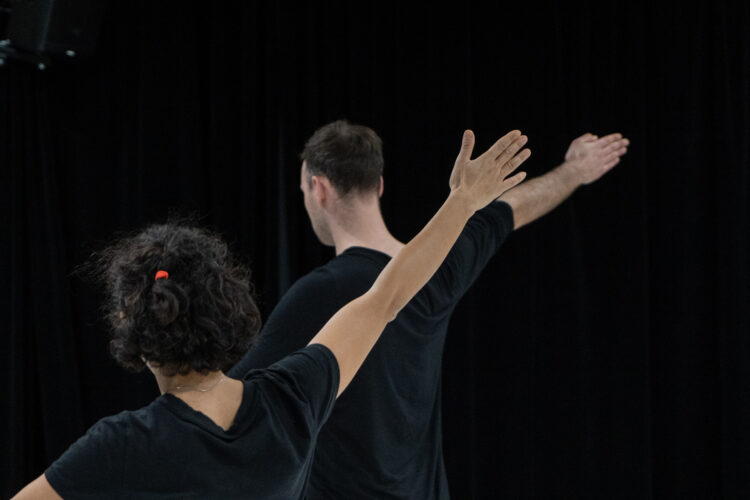
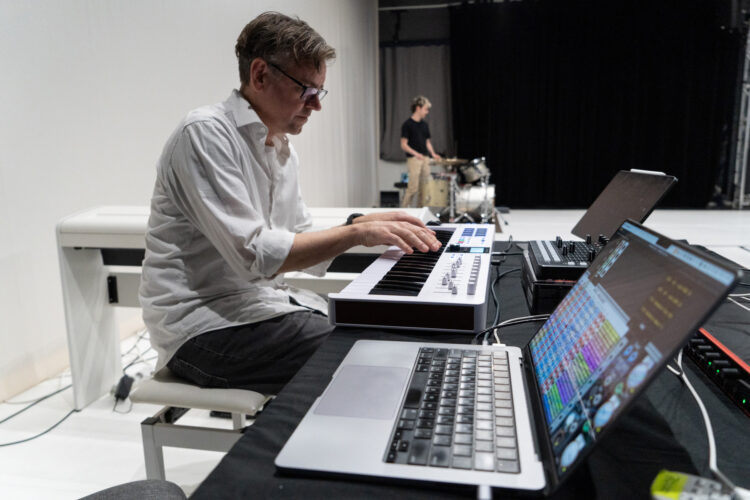
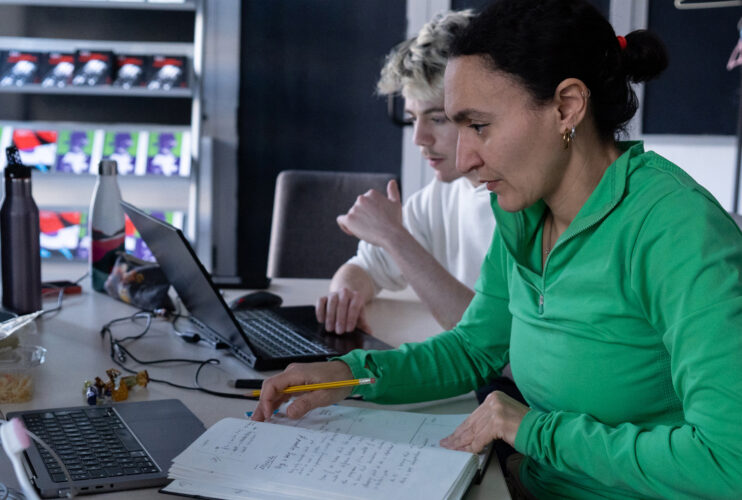
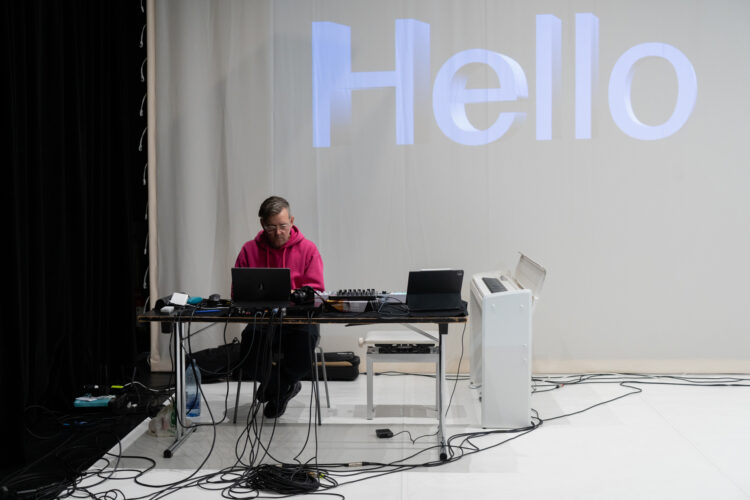
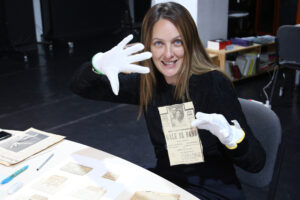
Comments are closed here.